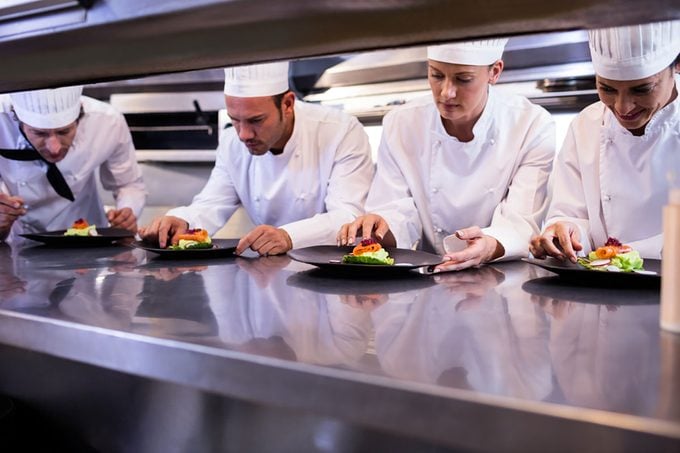The Surprising History of Michelin Stars
Updated: Nov. 17, 2023
A tire company and fine food can't have anything to do with one another, can they? We've got the scoop on how the Michelin star system came to be and what it means for the world's best restaurants.

If you’re a food fanatic like I am, you’re probably familiar with the Michelin star. It’s a prestigious rating that’s awarded to the best eateries around the world, and each year the ratings are released in the new Michelin Guide. (Much like our 5-star recipes from home cooks!) Whenever I hear that a restaurant has been awarded multiple stars, I find myself oohing and ahhing over the accomplishment. But I’ve also found myself asking, there’s no way Michelin stars have anything to do with Michelin tires, right?
Turns out, they do. The tire company and the rating system have a history together going back more than a century.
The Fascinating History of Michelin Star Rating
Back in 1900, a few years after the Michelin brothers Andre and Edouard started their tire business, they realized they needed to motivate people to get out on the road. The more people drove, after all, the more wear and tear their cars would see. Read: more tire sales. Smart men!
To encourage motorists to travel, the brothers published the Michelin Guide. This handbook provided drivers with everything they needed to know for their journeys through the French countryside: a Michelin tire manual, maps, a list of hotels and—of course—recommendations where to stop for a bite to eat. Hungry for information, tourists gobbled these books up. Soon the Michelin Guide was a common reference for European travelers. Think of it as one of the first travel guides.
From Tires to Tartare
To learn more about new restaurants, Michelin employed full-time food critics. These inspectors would spend months touring the continent looking for the very best cuisine. Using only the strictest criteria, the inspectors would judge the food and determine if it was worth including in the guidebook.
Eventually, the company created a rating system for these exceptional restaurants. One star was very good—stop if you are driving past. Two stars were worth a detour. And three stars meant you should make a special trip to try it. This basic system is the foundation for the coveted rankings that we know today. Now, in 28 countries around the world, hundreds of restaurants boast Michelin stars.
Planning a trip? Whether you’re making a detour for a Michelin star restaurant or not, we’ve got tips on how to save big at restaurants of any caliber.
